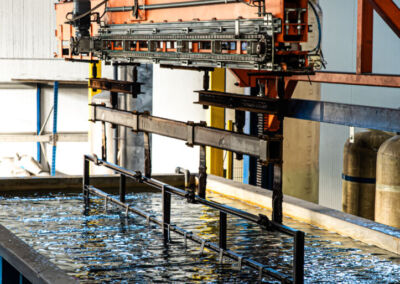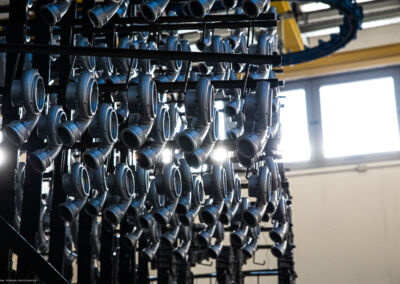CATAPHORESIS
Cataphoresis is a surface treatment, capable of imparting significant corrosion resistance to elements made of iron, steel and other alloys (conductive materials). This process involves the uniform deposition of an epoxy or acrylic resin onto the surface of the element, ensuring long-lasting protection against chemical agents and other types of attacks, while also enhancing adhesion for finishing paints. Widely employed in industries such as automotive, aerospace, and household appliances manufacturing, cataphoresis is instrumental in applying protective coatings to metal parts.
Main characteristics
1. PROTECTION: excellent resistance to oxidation
2. VERSATITLITY: steel, aluminium, hot or cold galvanized objects, copper and cast iron can be treated
3. THICKNESS: high thickness from 12 to 40 microns
4. UNIFORMITY: uniform coating even on large surfaces and complex geometries
5. SPEED: relatively fast application compared to other painting systems
6. PAINT COMPATIBILITY: it guarantees excellent adhesion of subsequent layers of both powder and liquid painting
Technical specifications
| FEATURES | SPECIFICATIONS |
| Resin | PPG Powercron 6000 |
| Pretreatment | Tricationic Phosphating |
| Automation | Real-time process control |
| Capacity | 1500 kg |
| Tank volume | 5000 x 2000 x 2000 mm |
Process
1. Alkaline immersion degreasing
2. Alkaline spray degreasing
3. Double washing
4. Spray activation
5. Tricationic spray phosphating
6. Spray rinsing
7. Immersion rinsing
8. Electrodeposition
9. Washing by immersion in ultrafilter
10. Spray cleaning with ultrafiltrate
11. Drying at room temperature
12. Curing














